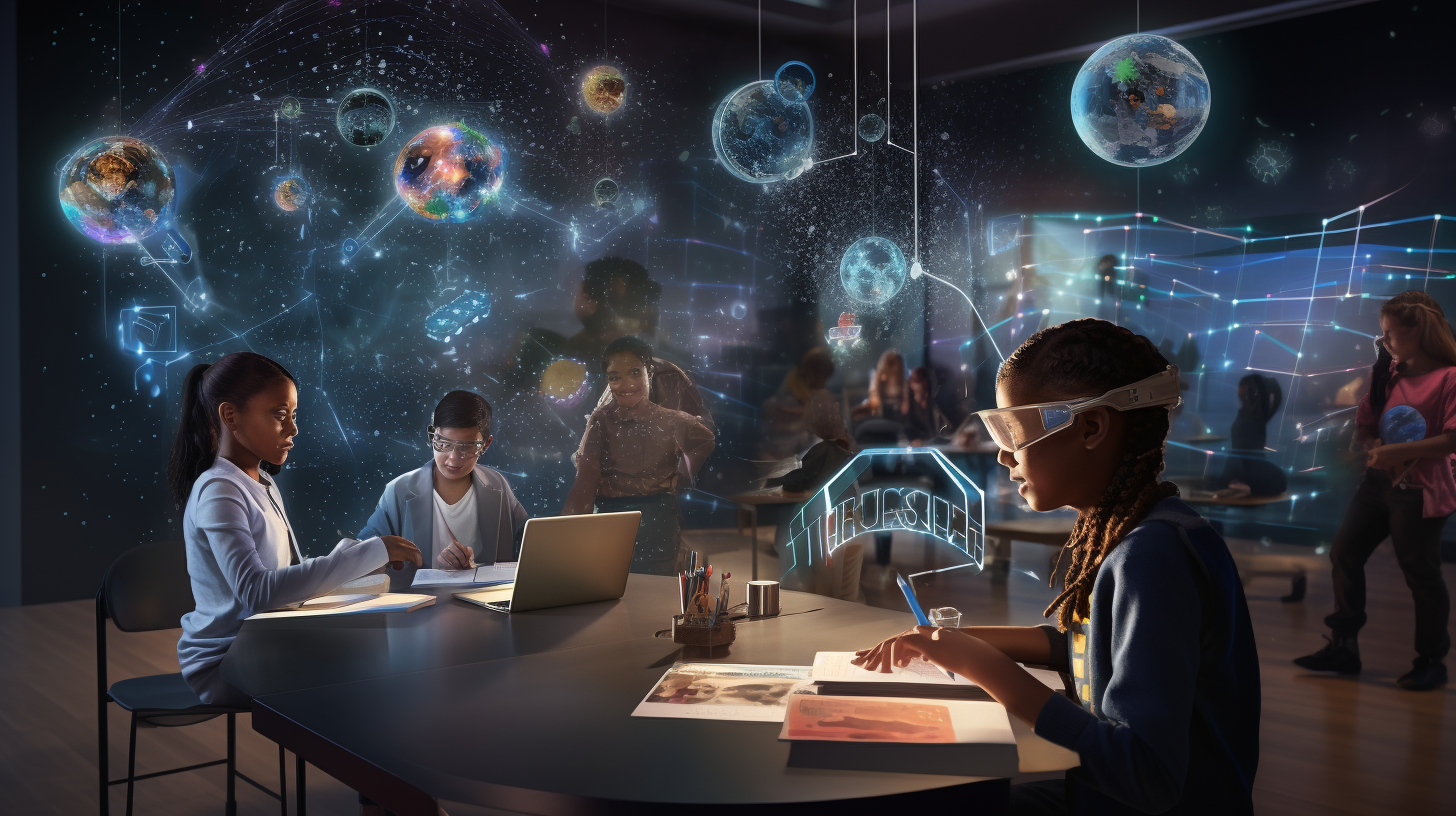
AI In Education: Personalized Learning, Automated Grading, Virtual Tutors
You're in a dynamic era where AI is revolutionizing education. Imagine customized learning experiences, automated grading systems, and virtual tutors - all tailored just for you. They're not just dreams anymore, but realities reshaping the educational landscape.
Let's delve into the world of AI in education, weighing its pros and cons, and exploring how it's transforming the way you learn.
Understanding the Role of Technology in Classrooms
Let's delve into how technology is playing a crucial role in transforming today's classrooms.
Imagine walking into a classroom where every student's learning is personalized, lessons are interactive, and progress is tracked in real-time. That's what technology in education offers you.
You've got AI-powered tools that adapt to each student's learning style, pace, and level of understanding. Assignments are no longer a one-size-fits-all; they're tailored to challenge every student just enough.
Automated grading systems free up your time as a teacher to focus more on teaching and less on administrative tasks. Virtual tutors are on standby, ready to help students with their homework or prepare for exams.
All these are possible because technology is revolutionizing the way you teach and how students learn.
Customized Education Experiences through Technology
Through tech advancements, we're now able to tailor educational experiences to each individual's unique needs and pace. Imagine a classroom where you're not just another face in the crowd, but the center of the learning experience. AI technologies can monitor your progress, identify your strengths and weaknesses, and adapt the curriculum accordingly. You won't waste time on topics you've already mastered, and you won't feel left behind when struggling with a certain concept.
Moreover, virtual tutors can provide immediate feedback, ensuring you understand a topic before moving on to the next. Automated grading not only saves teachers' time but also provides you with instant evaluation. In this tech-driven education world, you're no longer a passive recipient of knowledge, but an active participant in your own learning journey.
The Future of Evaluating Students' Progress
In the future, you'll see a shift in how your progress is assessed, moving away from traditional methods to more innovative, tech-based approaches. Automated grading systems and virtual tutors will become the norm, providing real-time feedback and personalized learning plans.
You'll be evaluated not just on your final answers, but on how you arrived at them. This'll highlight your problem-solving skills and your ability to apply knowledge in different contexts.
Moreover, AI will track your learning style, strengths, and weaknesses, making education a more tailored experience. It's not just about passing or failing anymore; it's about understanding your unique learning journey.
The Rise of Digital Instruction Aides
You'll soon notice an influx of digital instruction aids designed to enhance your study experience, as technology continues to reshape the landscape of academia. These tools aren't mere flashcards or online textbooks; they're intelligent systems that adapt to your learning style, pace, and preferences. They can pinpoint your weaknesses and adjust their guidance accordingly, turning learning into a personalized journey.
You'll find yourself using virtual tutors that provide instant feedback and automated grading systems that save precious time. You can also expect interactive simulations that make complex concepts easier to understand. So, brace yourself. You're not just studying with technology; you're studying through it.
The future of education is here, and it's digital, personalized, and designed to empower you.
The Pros and Cons of Technology in Education
Despite its numerous benefits, there's also a flipside to tech's role in schooling that we can't ignore.
You might be dazzled by the prospect of personalized learning, automated grading, and virtual tutors, but it's also crucial to consider the potential pitfalls.
For starters, there's the issue of equal access. Not every student has the luxury of a reliable internet connection or a personal device.
Also, while tech tools can enhance learning, they can't replace the human touch of a dedicated teacher.
There's also the risk of students becoming overly reliant on technology, to the point where their critical thinking skills may suffer.
Conclusion
You've seen how AI can revolutionize education, from personalized learning to automated grading and virtual tutors. The future is bright with endless possibilities.
But remember, technology also has its drawbacks. It's essential to balance its use while ensuring the human touch in education isn't lost. Technology can enhance learning, but it can't replace the value of a dedicated teacher.
So, tread wisely in this brave new world of AI in education.